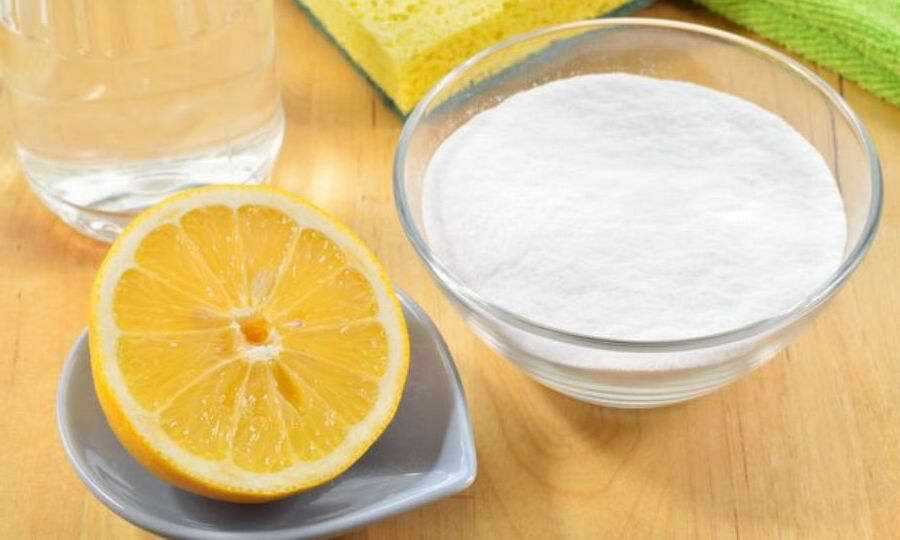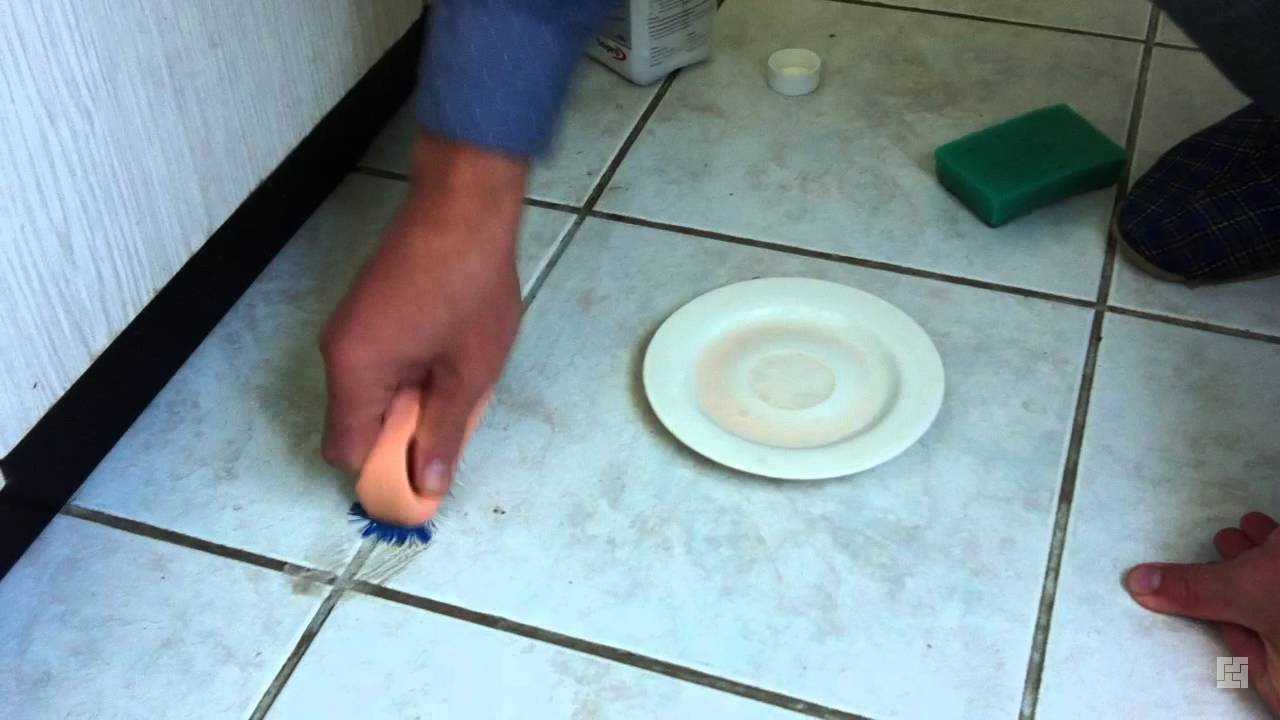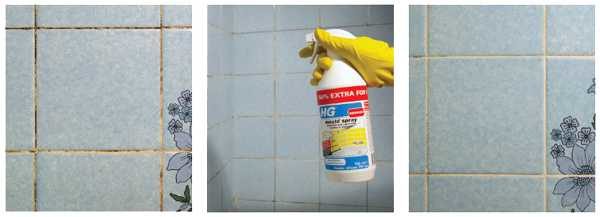How and how to clean the tiles in the bathroom, in the kitchen: store, home remedies
During operation or after repair, it becomes necessary to clean the tiles in the bathroom. What are the means, how to use them - we will discuss in the article.
How to remove plaque on tiles
From contact with water with a large amount of salts, unclear traces remain on the surface of the tile and plumbing. If they are not removed, they form a loose coating, which significantly spoils the appearance. The color of the plaque can be different - white, yellowish, gray brownish, etc. Depends on the type of salts contained in the water. Since plaque has a different composition, in different cases an effective remedy has to be selected empirically.
store funds
In stores there is a large selection of products that can be used to clean the tiles in the bathroom. Some of them are imported, some are domestically produced. There are special compositions for cleaning from limescale, there are those that are called "for baths and showers."
In some cases, compositions for cleaning toilets and other plumbing can cope with plaque. For example, you can use diluted ordinary "Whiteness", "Domestos", "Dressing Duck" and other similar products. Just one word of caution: if the joints between the tiles are filled with light-colored grout, choose a dye-free detergent. It does not leave marks on porcelain or faience, but it can stain the grout. Then you have to bleach the seams, which is also not easy.
![]()
These products contain chlorine or its derivatives and at the same time disinfect the room. They are diluted with water, applied to the walls with a sponge. To speed up the process, you can pour the solution into a spray bottle, but it will be difficult to breathe and it is better to wear a mask or respirator and gloves on your hands. Then you have to wait a few minutes, rinse with a wet sponge, then wipe dry. In some places where deposits are most intense, re-treatment may be required. You can rub the heavily contaminated area with the back (hard) side of the sponge. Using metal scrapers is not always safe - they can damage the enamel.
You will also need to clean the tiles with the help of special tools. Their label describes the method of application, but usually only the time that the composition should remain on the walls differs.
| Name | Purpose | Volume | Price | Manufacturer country |
|---|---|---|---|---|
| HG | To remove limescale | 500 ml | 424 rub | Netherlands |
| CillitBang (atomizer) | Universal remedy for plaque and rust | 750 ml | 299 rub | Russia |
| Frosch (environmentally friendly product) | Bath and shower cleaner | 500 ml | 279 rub | Germany |
| cif | Cleansing cream-remedy for plaque and dirt | 500 ml | 235 rub | Hungary |
| Flat | Rust and limestone remover gel | 500 ml | 90 rub | Russia |
| Ecover ecological spray | Removes limescale, soap residue, rust stains, adds shine and gloss | 500 ml | 434 rub | Belgium |
| Nordland | Removes lime deposits, water scale, soap marks, rust | 500 ml | 353 rub | Germany |
Often there are positive and negative reviews for the same tool. This is mainly due to the different origin of spots and streaks. With some it works, with others it doesn't. This can only be determined by experience or by carefully reading the description.
Folk remedies
If you carefully read the composition of store products, they mainly contain substances that are in every household, and if they are not, then you can buy them for very little money. Most often, the composition contains citric acid. So she is the leader among folk remedies for removing limescale. You can also try vinegar or lemon juice. Table vinegar with a concentration of 6% or 9% can not be diluted. Citric acid must be diluted. If it is a powder, a teaspoon will go to a glass of water, if citric acid is in a diluted state, you need to look at the concentration. The final solution should have 6-10% acid. In the resulting solution, moisten a sponge or cloth and wipe the surface, well moisturizing those places where the drips are more intense. Further, the process is already known.

Regular baking soda works well with soap scum. We take it on a damp sponge / rag, wipe the walls, then rinse it off.
Sometimes it helps to first rub the tile with soda, then wipe it with vinegar. A chemical reaction begins, during which plaque is destroyed. In general, and here you have to try, that's just a penny means.
A lot of unpleasant moments arise if you need to clean the tiles in the bathroom of a dark color with a glossy surface. It shows not only plaque, but also villi from the fabric. Fluff can be removed using microfiber cloths, and alcohol can add shine. It is too wasteful to use medical or food, you can add ammonia to the water and spray from the spray gun onto the walls cleaned of plaque, then wipe with microfiber. Shine guaranteed.
Cleaning floor tiles
It is easier to take care of floor tiles - they are more often wiped, so plaque simply does not form. There are usually problems with the seams. If they are overwritten with a light composition, then after a while it darkens and even a clean floor looks untidy. To correct the situation, you can use the same tools as for cleaning tiles from plaque, and soda is suitable from improvised means.

To work, you will need a narrow brush, you can use a toothbrush with hard bristles. The brush is moistened, you can dip it in detergent or diluted powder, then in soda. After - clean the seams, constantly wiping the foam and dirt.
How to wash off the fungus
The presence of fungus in the bathroom is a consequence of poor ventilation. If you don't fix it, you can't get rid of it. You can only periodically kill its visible manifestations. About that, and in this section we will tell you how good it is to remove the blackness that it leaves.
All products that contain chlorine or chlorinol help: Domestos, Duckling, Whiteness, etc. For processing, the agent is diluted, then blackened surfaces are treated with it. The seams between the tiles often have to be brushed with a toothbrush, otherwise the plaque does not disappear. As the exposure progresses, the plaque disappears (discolors), after which it can be wiped with a cloth with water, then dry.
Alcohol and vinegar also help. In this case, it is better not to breed them, because they process small areas, usually the seams between the tiles. A solution of borax helps: take 200 g of powder for 2.5 liters of water, apply to the affected surfaces, leave until dry. You can not rinse, but if it spoils the appearance, clean it as usual: with water, then with a dry cloth.

Ready-made anti-mold - a quick way to clean the tiles in the bathroom from the fungus
Hydrogen peroxide treatment may help. You can take a ready-made pharmacy solution, or you can dissolve Hydroperit tablets in water, making a more concentrated solution. Just remember that you need to work with gloves: this is also a toxic substance.
You can also find store-bought anti-mold products in the bathroom. Usually they are called that. There are the following brands: Unicum, Bagi "Anti-Mold", Magiclean, Bon "Anti-fungus", DR.BECKMANN, Mellerud and many others. They include: chlorine, citric acid, active oxygen (hydrogen peroxide) and some other substances. They cope well with the external manifestations of mold, but do not destroy it.
How to clean the tiles in the bathroom after repair
Often, after repairs, traces of cement, tile adhesive and other building compounds and mixtures remain on the surfaces. Cleaning the tiles in the bathroom after the mixtures have dried is a very difficult task. There is a cement remover in stores. For example, Atlas, Olympus, Docker Zement, Docker Epoxy (G), Keranet Mapeib and others. They are applied, wait a while, then the crumbling cement mortar is removed with a stiff brush.
Dried cement and adhesive mixtures based on it are removed using acid solutions. Any acid will do, from dilute hydrochloric to citric and regular vinegar. It is necessary to work with acids carefully: in gloves and a respirator with good ventilation. As the acid will corrode the cement, it can be removed, after cleaning, rinse with water.
Tile adhesive, due to the presence of special additives, cannot always be removed like ordinary cement mortar. In hardware stores you can find special cleaning products. For example, Tiprom-OTs, Keranet, AtlasSzop and others. They are applied to the surface, kept for some time (indicated in the instructions), then the softened composition is removed with little effort. This method of cleaning tiles in the bathroom from tile adhesive is suitable for contamination of the front surface.
Sometimes a situation arises when the tile has fallen off along with the glue. After cleaning, it must be installed in place. Softening glue with chemicals is too wasteful - they are not cheap. What remains is mechanical removal. If the layer is large - more than 0.5 cm, it is cut into squares with a diamond disk. After, putting the processed tile on the edge, pieces of glue are chipped off with a chisel. What has not broken off can be left or removed with a grinding disc. With such work, there will be a lot of dust, so it is better to do it on the street. You can reduce the amount of dust and make the task a little easier by soaking the tiles in water. The glue will absorb some of it, although it is positioned as moisture resistant.
If the glue layer is thin, you can try to chip it off in layers, if it doesn’t work, grind it. It is unrealistic to process a large number of tiles in this way, but several pieces can be prepared.






